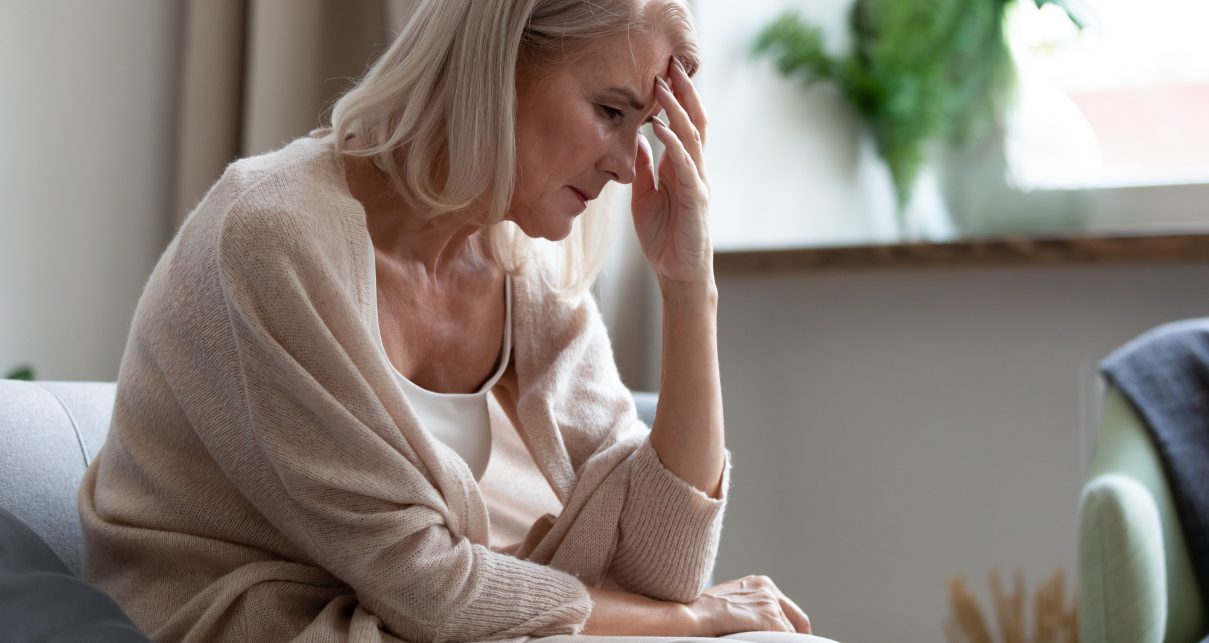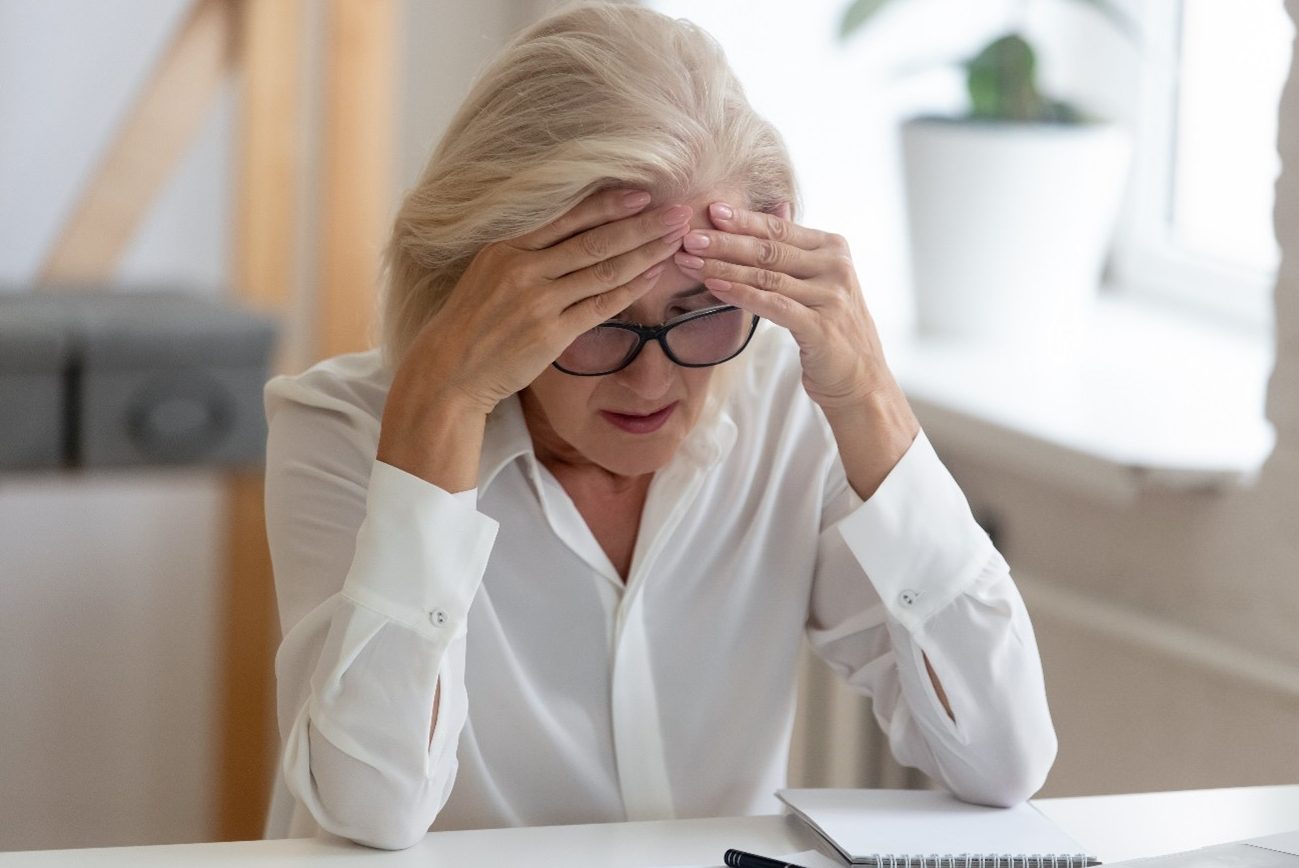If you are a woman, you may be wondering what happens to your body during menopause. When you are in menopause, you will start to experience symptoms like depression, fatigue, and loss of sex drive. In addition to these symptoms, there are others, including urinary incontinence and osteoporosis.
Osteoporosis
Osteoporosis is a bone disorder that causes your bones to become weak and porous. It causes fractures, and is particularly common in postmenopausal women. Fortunately, there are treatments that can slow the progression of osteoporosis.
Women who are menopausal should be assessed for bone density and other risk factors. They can also take hormone replacement therapy to strengthen their bones. These therapies have risks, but they can help to ease the discomfort of menopause.

The best way to prevent osteoporosis is to maintain a healthy lifestyle. Eating a well-balanced diet, being active, and avoiding smoking and excessive alcohol consumption are good ways to do this. If you are concerned about your osteoporosis, visit a women’s health specialist.
Bones need estrogen to stay strong. Estrogen naturally protects the bones from breakage. However, when a woman’s oestrogen levels drop, the bones lose strength faster.
Women in menopause may not get enough calcium, vitamin D, and other minerals to keep their bones healthy. Therefore, a doctor may recommend supplements or a diet rich in calcium and vitamin D.
Weight-bearing exercises like walking, jogging, and dancing can help to build and maintain your bone health. Exercise helps your body to absorb calcium, which reduces your risk of developing osteoporosis.
Postmenopausal women can benefit from medication, such as hormone replacement therapy, to build their bones and control their night sweats. Several medical conditions, such as a damaged thyroid gland, may increase the risk of osteoporosis.
For more information on menopause and bone health, visit the North American Menopause Society website. There you can read the latest position statement from the society, which was updated in 2010.
Whether you are a woman going through menopause, or an elderly grandmother, it is important to maintain your bone health. In fact, you can protect your bones and reduce your risk of developing osteoporosis by exercising, eating a healthy diet, and talking with your physician.
Urinary incontinence
Urinary incontinence is a major nuisance for women in menopause. This condition causes many problems for patients, including limiting their social life and causing depression. There are effective treatment options for urinary incontinence, and patients should seek help for these symptoms.
A health professional can evaluate a woman’s symptoms and help her find the right treatment. If her bladder is the cause of her incontinence, a doctor may recommend surgery, medication, or a combination of treatments.
Women can keep a diary of their urinary habits to better understand the occurrence of their leaks. They can also note whether they experience sudden onsets or episodes associated with physical activity.
When the urinary tract is the cause of the problem, a doctor can perform a urodynamic test to better determine how well the urethra and bladder work. More sophisticated tests can include urethro-cystoscopy or a urethro-microscopy. However, urodynamic studies are not always required for evaluating uncomplicated UI.
Many women are embarrassed about their incontinence, but it’s important to talk to a doctor if the problem affects their daily life. In addition to seeking treatment, there are also lifestyle modifications that can be used to reduce symptoms and make it easier to manage a urinary tract disorder.
These modifications include reducing alcohol consumption, smoking, and fluid intake. Some patients also benefit from voiding pattern modification, pelvic floor muscle training, and behavioral therapies.
Women in menopause can be affected by several factors, ranging from the changes in their hormone levels to the decrease in blood flow. The body’s tissue, muscles, and hormones change as a result of these changes.
Menopause may not be the only cause of bladder problems, but it does make them worse. As estrogen and progesterone levels decrease, the body’s tissues are stressed.
Dryness
When a woman is in menopause, she can experience vaginal dryness. Dryness occurs in more than half of post-menopausal women, and it can affect the quality of life. There are many treatments available to help alleviate this condition.
Vaginal dryness is caused by a lack of moisture. This can lead to irritation and burning during intercourse. Using a vaginal moisturizer can help, as can over-the-counter lubricants.

Dryness may also be caused by other factors, such as medications or infections. Talk with a healthcare provider to determine the best way to manage your symptoms.
Women who have been in the same stage of menopause for more than 12 months without a period are considered to be in menopause. The drop in estrogen can cause a variety of symptoms, including vaginal atrophy.
It is important to get the diagnosis and treatment for your menopausal symptoms in a timely manner. In some cases, vaginal dryness can be treated with estrogen therapy. However, it is important to discuss the risks of estrogen replacement therapy.
Symptoms of vaginal dryness can range from mild to serious, and can impact the quality of a woman’s life. Taking action to reduce your symptoms can improve the quality of your life.
During menopause, a woman’s levels of estrogen and progesterone decrease. Low levels of estrogen can lead to vaginal atrophy, or the loss of the vulva’s normal tissue. A reduction in estrogen can also contribute to vaginal inflammation, and thinning of the lining.
Vaginal dryness can be embarrassing, and can be uncomfortable. Having sex with another person can often worsen the problem. Use a lubricant to provide temporary relief. Medications, including ospemifene (an estrogen agonist), and DHEA (a hormone that is inserted into the vagina), can ease the discomfort of dryness.
Loss of sex drive
During menopause, women can experience a decline in their sexual drive. This can be difficult for some women, but it is not uncommon. It is important to take note of your symptoms, as there are treatments to help.
Several factors can affect your sex drive during menopause. These include physical symptoms, mental preoccupations, and life changes. If you’re worried about your sexual health, contact your doctor to discuss the matter.
Physical symptoms can include dry vaginal tissues, night sweats, and hot flushes. Other symptoms can include depression and irritability. A woman’s desire for sex can also be reduced because of changes in her body image.
A woman can increase her sex drive by making certain lifestyle and mental changes. For example, reducing stress, adjusting diet, and adding sex toys can all help.
Women can also increase their sex drive by undergoing therapy. There are a number of therapies available, such as sex therapy, marital counseling, and sexual therapy. The latter is a form of psychotherapy that helps couples work through the challenges associated with intimacy.
Flibanserin (Addyi) has FDA approval to treat low libido. Currently, the drug is not approved for women after menopause. While it has shown promise in increasing libido, it can cause fainting and low blood pressure. Before using the medication, it’s important to talk to your doctor.
During menopause, many physical and emotional factors can affect your sex drive. It’s important to communicate your feelings to your partner so that you can work through any difficulties.
During menopause, there are medications available to address your libido. Although Flibanserin has shown promise in increasing libido, you should check with your doctor before using it.
Depression
Many women suffer from mood and emotional problems as they approach menopause. There are several reasons for this. One is the end of fertility, which can bring up feelings of loss and sadness. Another is the dramatic shift in hormones, which can cause physical and emotional symptoms.
Although the onset of depressive symptoms can occur during any stage of a woman’s life, there is evidence to suggest that menopause is the most likely time for symptoms to begin. As part of a comprehensive health assessment, clinicians should ask women about their experiences with reproductive cycle-related mood disturbances.
A number of studies have examined the association between menopause and various mood disorders. Most of the studies have focused on the depressive symptoms that are associated with this transition. Mood swings and hot flashes are known to be associated with hormonal changes. However, these are not likely to be the underlying causes of depression during this period.
Studies have also shown that women with a history of depression are more likely to experience the symptoms of depression during this time period. These findings are similar to those found in premenopausal women, but are less consistent with data collected from postmenopausal women.
Several large population-based studies have found that depressive symptoms are more common during the perimenopause, as well as during the transition to menopause. In addition, there is evidence that women with a prior history of major depression (MDD) are at a higher risk than others for symptoms during this time period.

Until more information is available, clinicians should be aware of the most effective ways to detect depression in their patients. For instance, a few studies have used the Hospital Anxiety and Depression Scale (HADS) to determine the incidence of depressive symptoms among their patients. This measure is validated and has been widely cited.



